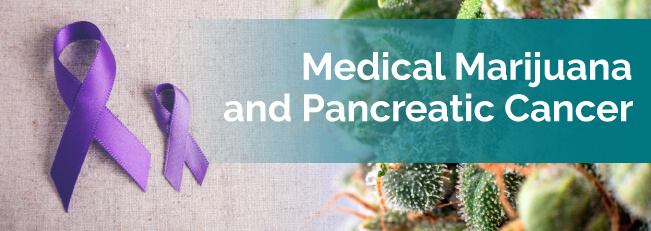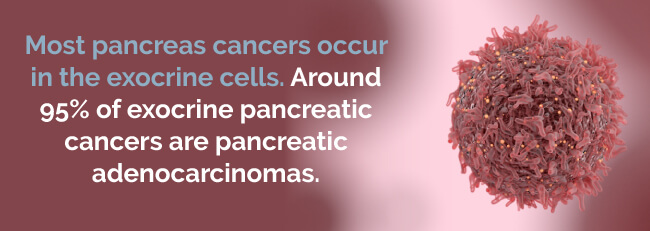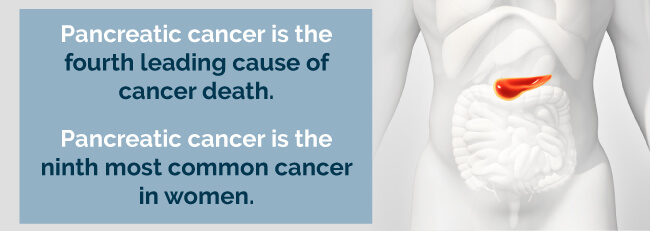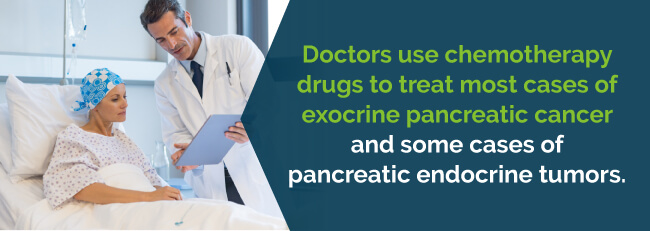
It’s likely that you or someone you know’s life has been impacted by cancer. As a life-threatening, difficult-to-cure disease, it puts a toll on everyone involved.
While pancreatic cancer isn’t one of the most common types of cancer, it still causes many of the cancer-related deaths in the United States. But with good treatment and care, you or your loved one can fight the odds and manage the disease and its symptoms.
Some patients use medical marijuana as a holistic treatment for their pancreatic cancer. Let’s examine the facts about pancreatic cancer and how cannabis can help.
Before we get into the specifics of pancreatic cancer, it helps to understand exactly how the pancreas works. We all know how organs like the stomach and lungs work, but we usually aren’t as well informed about what the pancreas does. Despite its relative obscurity, this organ performs some very important functions.
The pancreas uses two types of cells to regulate the hormones and enzymes in your body. Its exocrine cells, such as the glands and ducts, release enzymes that help you digest food. The endocrine cells make up less of the pancreas and create important hormones like insulin and glucagon.
Now that we know the parts of the pancreas, we can understand how the two kinds of pancreatic cancer affect you. Each type happens in its corresponding variety of pancreatic cell.
The two kinds of pancreatic cancer are:

In addition to malignant cells and cancer, the pancreas can have benign growths or precancerous cells. Some cause no harm at all (benign growths), and others can cause cancer if left alone (precancerous cells).
Since the pancreas governs a lot of digestive functions, pancreatic cancer symptoms often occur in organs related to processing food. The full list of symptoms includes:


The type of treatment you get for pancreatic cancer depends on the type and stage of the cancer, as well as other factors. For instance, other health problems may make surgery unfeasible, or the patient might have an allergy that affects their medication options.
Depending on how far the cancer has progressed, surgery can either completely cure pancreatic cancer or simply make it easier to deal with. In the early stages, doctors can surgically remove the entire cancer, potentially curing it. If the cancer has spread out too far for complete removal, some patients still undergo surgery to reduce the severity of their symptoms.
Instead of the removing cancer, ablation and embolization destroy it. Ablation uses extreme temperatures to destroy cancer cells and doesn’t require a stay at the hospital afterward. Embolization involves blocking blood flow to the affected area to kill off the cancer cells.
In some cases of exocrine pancreatic cancer, a patient will receive radiation therapy. Doctors often use radiation therapy to supplement surgery or replace it. Radiation therapy can reduce the chance of cancer returning or shrink cancer cells.

Doctors use chemotherapy drugs to treat most cases of exocrine pancreatic cancer and some cases of pancreatic endocrine tumors. They provide it in cycles to let the patient’s body recover between treatments. Although chemotherapy affects your healthy cells, it also packs a punch that other treatments don’t.
But not every patient is a good candidate for some of these treatments. Not every patient can withstand the side effects involved with them. Some patients can’t get surgery or related procedures. Also, chemotherapy and radiation therapy are incredibly harsh on your body and cause side effects like hair loss, nausea, digestive issues, fatigue and a suppressed immune system.
Medical marijuana can treat many of the issues associated with pancreatic cancer and its potential treatments. It can supplement, or sometimes replace, the treatments typically used. Some of the benefits of medical marijuana include:
Research indicates the possibility of marijuana reducing pancreatic cancer cells. If further research continues to support this, we could soon begin using marijuana as a legitimate cancer treatment.
Christoph W. Michalski and nine other researchers examined the use of cannabinoids, the compounds found in marijuana, for pain related to pancreatic cancer. While the patients’ immune respond stayed the same, their pain levels reduced while their survivability increased. Since marijuana can act as an immunosuppressant, it’s important to measure how much it suppresses your immune system when used.
Arkaitz Carracedo and six other scientists observed the relationship between cannabinoids and pancreatic tissue. Pancreatic tumor cells have more cannabinoid receptors than normal pancreatic tissue, making them more reactive to cannabinoids. Their data suggested that cannabinoids inhibit the progression of pancreatic tumor cells without damaging healthy cells.

The field of medical marijuana research is still relatively new and exciting. We’ve studied it for years, but the law has limited our ability to research it like other topics. As laws and opinions on weed change, so will our resources for medical marijuana research.
The components in marijuana called cannabinoids could kill off pancreatic cancer cells. Pancreatic adenocarcinomas are some of the deadliest forms of cancer. So, researchers investigated how cannabinoids could affect it. Building off research showing pancreatic cancer cells have more cannabinoid receptors than healthy pancreatic tissue, they applied THC to pancreatic cancer cells to discover the cancerous cells died off, but the benign cells took no damage. Both isolated cells and pancreatic cancer in living individuals reacted this way.
This same study also discovered hints to the way cannabinoids inhibit cancer cells. When the team blocked the CB2 receptors in the cells they observed, the cancer-killing effects of the THC stopped. This finding indicates the CB2 receptor could cause the death of cancer cells induced by THC. Also, the data collected implied that ceramide could help THC kill cancer cells. Ceramide is a fatty substance that can make chemotherapy work better, and it seems that it can help cannabinoids function properly, as well.
Another study found that the CB1 receptors play a role in killing pancreatic cancer cells, too. Instead of using THC, the team behind this study used various synthetic cannabinoids. If future research supports both studies, combining cannabinoids could effectively kill pancreatic cancer.
You can consume marijuana in many ways which each have their own medical benefits and drawbacks. When you pick a consumption method, you must consider your health problems, reaction to weed, and personal preferences.
Methods of using marijuana medication include:
Although any method can give you relief, some work better than others. As you can see, edibles and patches will probably work best, but you can also try more traditional products like tinctures and pills. Ultimately, only you and your doctor should work together to decide which method will work best for you.
Cannabis is an incredibly versatile medicine. Side effects for one person can be a benefit for another. So you might welcome some of the side effects of marijuana instead of considering them a negative.
Rather than looking at marijuana as a black-and-white situation, consider its effects and decide what will help and what will harm you.
If you experience side effects from cannabis, you can usually relieve them easily. Examples of cannabis side effects include:
Now that you understand how medical marijuana can treat pancreatic cancer, you may want to learn more about legally obtaining it. Fortunately, in addition to these condition guides, we have numerous pages covering other medical marijuana-related topics.
To understand what you can and can’t do in your state, look at your state’s marijuana laws. They’ll give you a good idea of the treatments legally available, how to get authorized to buy marijuana medicine and where to buy it. It will also help you avoid accidentally doing something illegal.
You should also read up on the doctors and dispensaries in your area. Depending on where you live, you might need to find a doctor certified to recommend medical marijuana. Looking into the dispensaries locally available can help you make the right purchasing decisions.
Find A Doctor Find A Dispensary


Please allow us to access your location to find local dispensaries.
VIEW ALL DISPENSARIES ➔